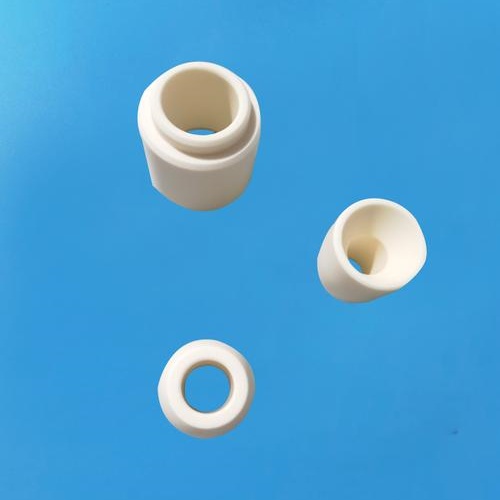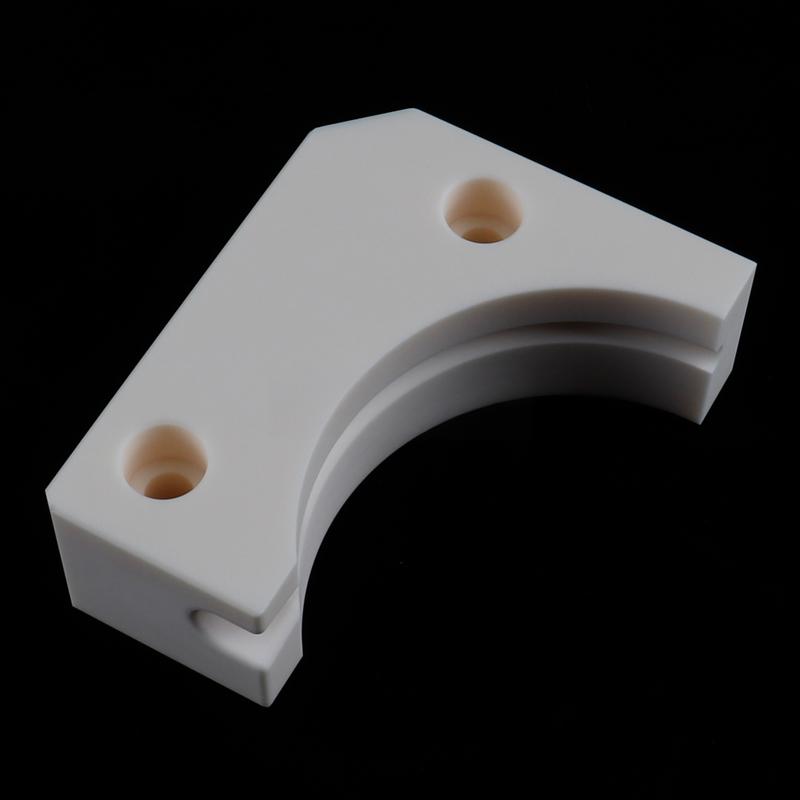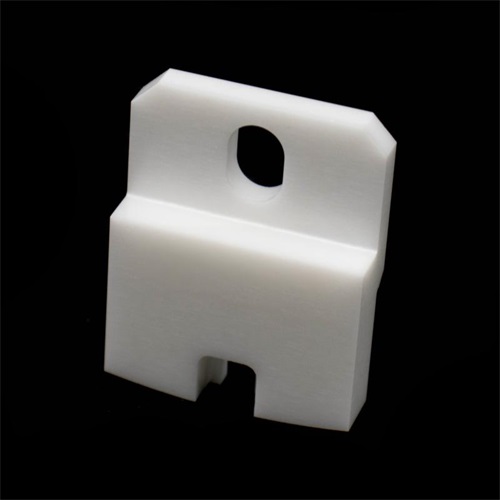Aluminum oxide ceramic structural components are high-performance ceramic materials mainly composed of high-purity aluminum oxide (Al ₂ O3), which have high hardness, high wear resistance, good electrical insulation, excellent chemical stability, and high temperature stability. According to the different contents of alumina, it can be divided into 75%, 85%, 95%, and 99% alumina ceramics. These structural components are usually manufactured using advanced molding processes (such as dry pressing, grouting, hot isostatic pressing, etc.) and sintering techniques, which can meet the strict requirements of various industrial applications.

Application area
Aluminum oxide ceramic structural components are widely used in multiple fields due to their excellent performance:
- In the field of electronic information
-Integrated circuit substrate: The high insulation and thermal stability of alumina ceramics make it an ideal substrate material.
-Electronic packaging: a packaging shell used for electronic components to protect internal precision components. - In the field of mechanical manufacturing
-Mechanical seals: Their high hardness and wear resistance make them suitable for mechanical components that operate at high loads and speeds.
-Bearings and cutting tools: Alumina ceramic bearings and cutting tools have longer service life and higher precision. - Aerospace field
-Engine components: High temperature components used in aircraft engines, such as turbine blades, combustion chambers, etc.
-Satellite antenna bracket: Lightweight design and high mechanical strength make it an ideal material for satellite antennas. - Medical field
-Artificial joints and bone screws: Aluminum oxide ceramics have good biocompatibility and are not prone to rejection reactions.
-Medical equipment: used for high-precision instruments such as surgical instruments and diagnostic equipment. - Energy sector
-Fuel cell components: bipolar plates and connecting columns used in fuel cells, with good corrosion resistance and conductivity.
-Lithium battery sintering furnace: used for high-temperature sintering process in lithium battery production. - Chemical industry field
-Acid resistant pump impeller and valve: The corrosion resistance of alumina ceramics makes it an ideal material for chemical equipment.
-Pipeline lining: used for lining acid carrying pipelines to prevent erosion by acidic substances.

Alumina ceramic structural components can be highly customized according to specific customer needs, including shape, size, surface treatment, and performance requirements:
- Shape customization
-Complex geometric shapes: capable of manufacturing structural components with complex designs such as porous, multi-channel, and irregular grooves.
-Irregular parts: such as irregular threaded fasteners, porous ceramic bases, etc., to meet specific mechanical and fluid dynamics requirements. - Size customization
-High precision machining: By using CNC machining, laser cutting and other technologies, the dimensional accuracy can be ensured to reach ± 0.005mm.
-Diversified sizes: From miniature components to large structural parts, they can be customized according to specific needs. - Surface treatment
-Smooth surface: Through precision grinding and other processes, the surface is ensured to be smooth, reducing friction and wear.
-Special coating: Surface metallization treatment (such as Mo Mn method) or conductive coating (such as Pt/Ni) can be carried out as needed. - Performance customization
-Wear resistance and corrosion resistance: By adjusting material formulations and optimizing processes, the wear resistance and chemical corrosion resistance of structural components are improved.
-Thermal and electrical insulation properties: Optimize the thermal conductivity and electrical insulation performance of alumina ceramics according to application requirements.

Alumina ceramic structural components have become an indispensable key material in modern industry and technology fields due to their high performance and highly customizable capabilities.
CATEGORIES
LATEST NEWS
- What is Macor processable g...
- The material properties and...
- The reason for the high pri...
- What are the preparation me...
- Why modify aluminum nitride...
- Thermal conductivity values...
- What is the thermal expansi...
- Thermal shock resistance of...
- The average coefficient of ...
- What is high alumina ceramic



